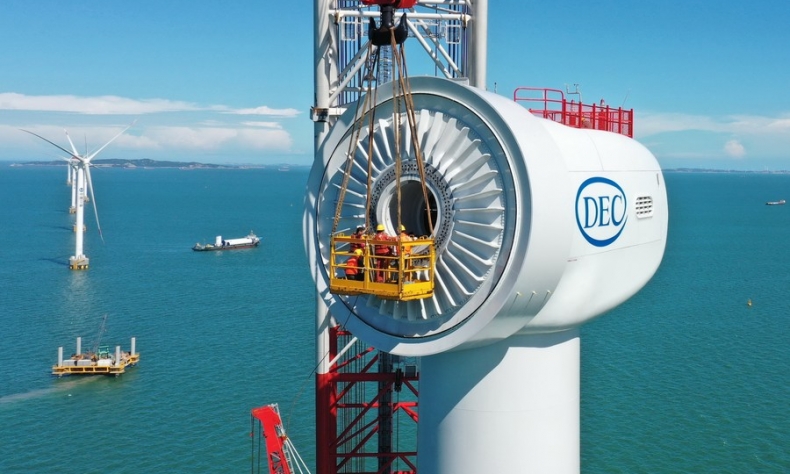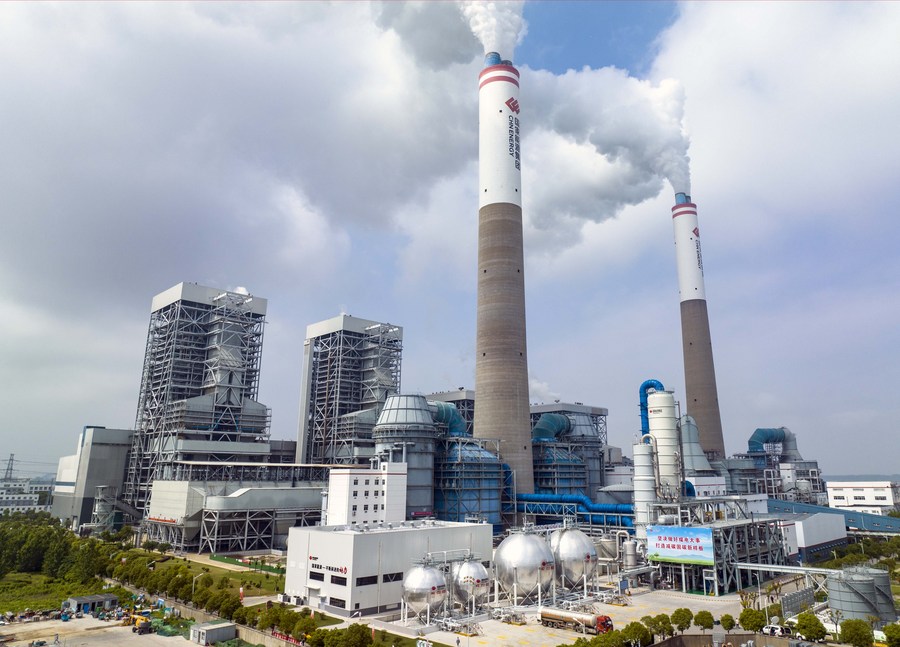Tackling Climate Change Requires Global Consensus and Coordination

The speed at which China and the U.S. are reducing emissions and to what extent they assist other countries in the transition toward clean energy will determine whether or not Earth will be able to dodge the potentially catastrophic consequences of climate change.
When U.S. Special Presidential Envoy for Climate John Kerry arrived in Beijing for a four-day visit on July 16, the ubiquitous cameras picked up on one particular detail: Kerry took off his jacket before getting into the car. With temperatures reaching about 35 degrees Celsius in Beijing that day, wearing a two-piece suit would understandably be impractical even for someone concerned with maintaining a presentable appearance.
As the third senior official from the Joe Biden administration to visit China within a month, Kerry’s trip was of great significance as it aims to revive discussions with China regarding climate change.
Kerry concluded his trip to Beijing on July 19, with no joint statement regarding the negotiations released. Wang Peng, a research fellow with the National Academy of Belt and Road Green Development at the China International Culture Exchange Center, explained that this lack of statement was not surprising due to “the conflicting interests and perceptions of both sides.”
“But it does not mean that Kerry’s visit to China was without any achievements. From the information disclosed, there is still a certain level of consensus between the two sides, which can be summarized as: maintaining stability and strengthening cooperation,” Wang told Beijing Review.
According to Wang, Kerry’s visit to China is a positive step toward improving Sino-American relations. However, he also emphasized that this journey necessitates increased sincerity and patience from both sides.
“It should be approached through incremental progress and implemented gradually,” Wang said.
Global heat
Beijing recently experienced its first-ever bout of extreme heat prior to midsummer. From June 22 to 24, temperatures in Beijing surpassed 40 degrees Celsius for three consecutive days. This hadn’t happened since meteorological records started in 1951.

According to statistics released by the National Climate Center on July 2, China has experienced its highest number of really hot days, when the mercury rises above 35 degrees Celsius, since 1961. But China isn’t the only one baking in extreme heat as temperatures are rising significantly across the globe. European climate scientists predict that 2023 could potentially become the hottest year on record worldwide. This increase in temperature can be attributed to a combination of global warming and the impact of El Niño, a term that describes a climate pattern of unusual warming of surface waters in the eastern Pacific Ocean that substantially affects global weather patterns.
A recent analysis conducted by the World Weather Attribution Group, comprising leading climate scientists, found that human-induced climate change had increased the probability of the unprecedented heatwave currently roasting Spain, Portugal, Morocco and Algeria by at least 100 times. These extreme temperatures would have been highly unlikely to occur without the impact of climate change.
“High temperatures must be treated as a calamity and addressed with the utmost urgency. However, people often underestimate its gravity, despite its profound impact on every individual,” Li Jing, an ecological planner from the Tsinghua Tongheng Urban Planning & Design Institute in Beijing, said in an interview with Beijing-based Lifeweek magazine.
High temperatures are not the sole manifestation of global warming; they also entail an escalation in heavy rainfall, hurricanes, droughts and other forms of extreme weather.
Oases vs. deserts
Before attending the Fourth China-EU High Level Dialogue on Environment and Climate in Beijing, Frans Timmermans, the European Union’s climate chief, delivered a keynote speech at Tsinghua University on July 3.
In his speech, Timmermans emphasized the urgency of the climate crisis. He stressed that climate change is happening and affects everyone globally. “Climate change, the climate crisis, is not European and it’s not Chinese. We all live under the same sun and share the same atmosphere,” the Dutch diplomat added. He further highlighted the need for “visible leadership” in addressing climate challenges.

But Timmermans also expressed optimism about potential progress in tackling climate change through collaboration between the EU, China and the United States. In an interview with Shanghai-based news portal ThePaper.cn, he emphasized that addressing the climate crisis should be a collective responsibility as it surpasses all political issues.
Cooperation on the issue of climate change used to be a rare bright spot in the increasingly tense relationship between China and the U.S. The two countries jointly promoted the achievement of the Paris Agreement in 2015, the global plan to keep temperature increases well below 2 degrees Celsius above pre-industrial levels. At the 26th UN Climate Change Conference of the Parties (COP26) in Glasgow, Britain, in 2021, the biggest and most important climate-related conference on the planet, they also issued a joint statement committing to control their national methane emissions by the end of 2022.
While there is hope for cooperation between China and the U.S., it is worth noting that the Biden administration has proposed separating climate change from the broader bilateral relationship. However, as then Chinese State Councilor Wang Yi conveyed to Kerry on September 1, 2021 via video link, “If the cooperation becomes isolated like an oasis surrounded by deserts within the context of China-U.S. relations, then eventually even this oasis will dry up.” Cooperation on climate issues simply cannot and must not be detached from broader bilateral relations.
In August 2022, China suspended climate change negotiations with the U.S. as a countermeasure against then Speaker of the U.S. House of Representatives Nancy Pelosi’s provocative visit to China’s Taiwan region earlier that same month.
“The first step for Kerry is to try to hold the U.S.-China relations consistent, with no new disruptions again derailing climate change cooperation. The second is to possibly return to the agreements achieved during the COP26, and advance those meaningfully. And the third is to reach consensus on how the two sides can work together at COP28 [set to take place in Dubai, the United Arab Emirates, this November],” Josef Gregory Mahoney, a professor of politics and international relations at Shanghai’s East China Normal University, said in his interview with China Global Television Network on July 17.

Struggling to move on
However, in the complex domestic American political environment, it remains uncertain if the Biden administration’s domestic climate agenda, one that seeks to “lower energy costs for families, bolster America’s energy security and strengthen community-driven climate resilience nationwide,” will be able to move forward, not to mention its global one.
This uncertainty was evident during a heated congressional hearing in the lead-up to Kerry’s China visit on July 13. Some Republican lawmakers accused Kerry of being too soft on China in climate policy. They demanded Kerry exert more pressure on China. As a side note: Many other Republicans in Congress even continue to deny the very existence of climate change.
According to data from the International Energy Agency, a Paris-based intergovernmental organization that studies global energy, China installed 96.6 gigawatts of solar power capacity in 2022, accounting for 42 percent of the world’s total. In 2022, solar power accounted for 44 percent of China’s new electricity generation capacity, and when combined with wind power, renewables represented 64 percent of the country’s new power capacity. The year 2022 marked the seventh consecutive year where solar and wind led the way in China’s power capacity additions.
What’s more, a report from market research firm BloombergNEF published in January revealed that China accounted for approximately 50 percent of global low-carbon expenditure. In 2022, China invested a substantial $546 billion in various sectors such as solar and wind energy, electric vehicles and lithium-ion batteries, nearly four times the American investment.
As the world’s two largest emitters of greenhouse gases and leading investors in renewable energy, the speed at which China and the U.S. are reducing emissions and to what extent they assist other countries in the transition toward clean energy will determine whether or not Earth will be able to dodge the potentially catastrophic consequences of climate change.
 Facebook
Facebook
 Twitter
Twitter
 Linkedin
Linkedin
 Google +
Google +










